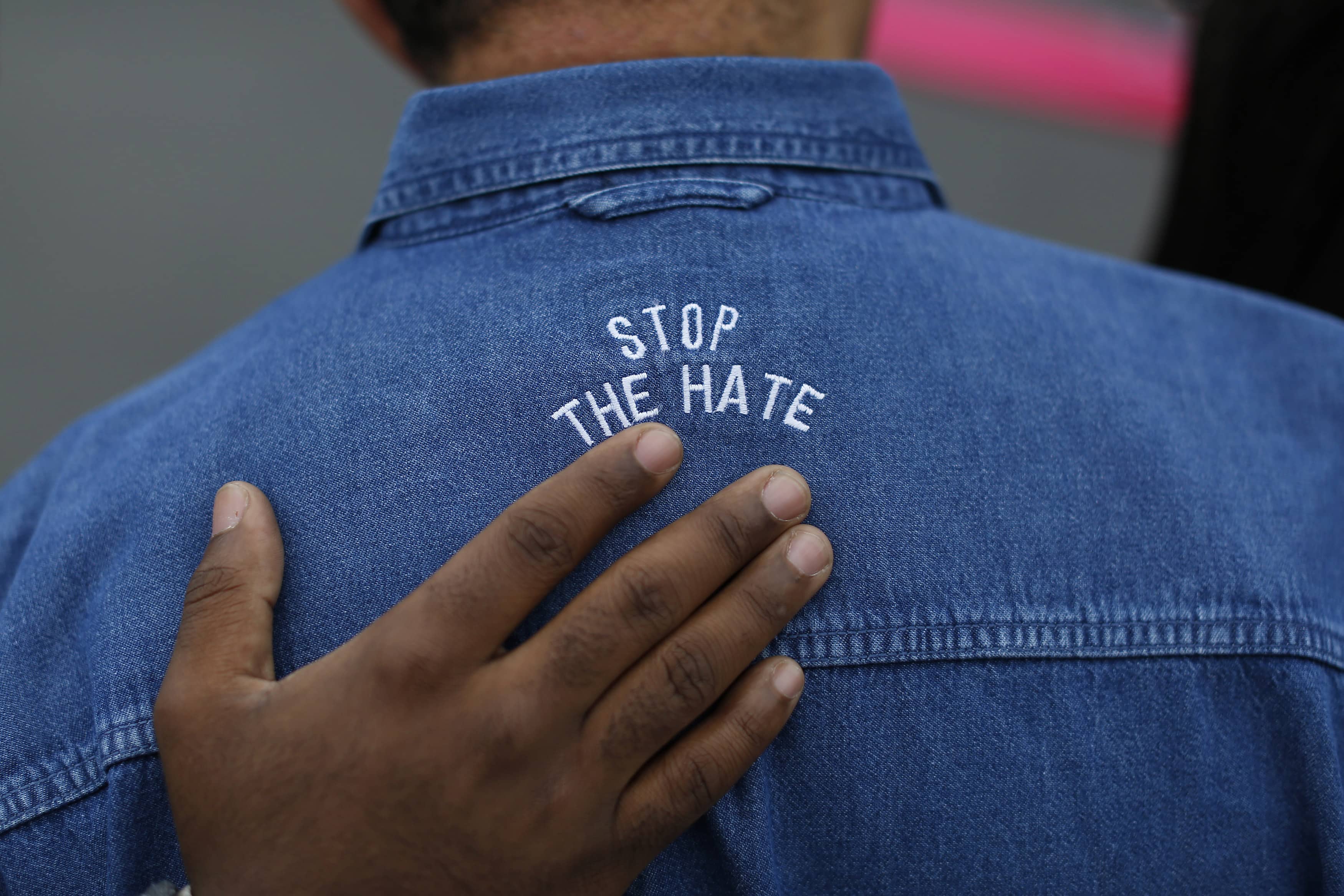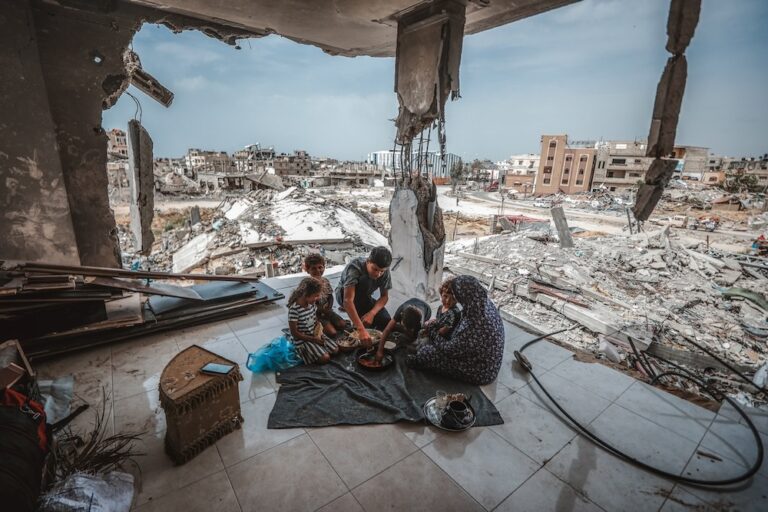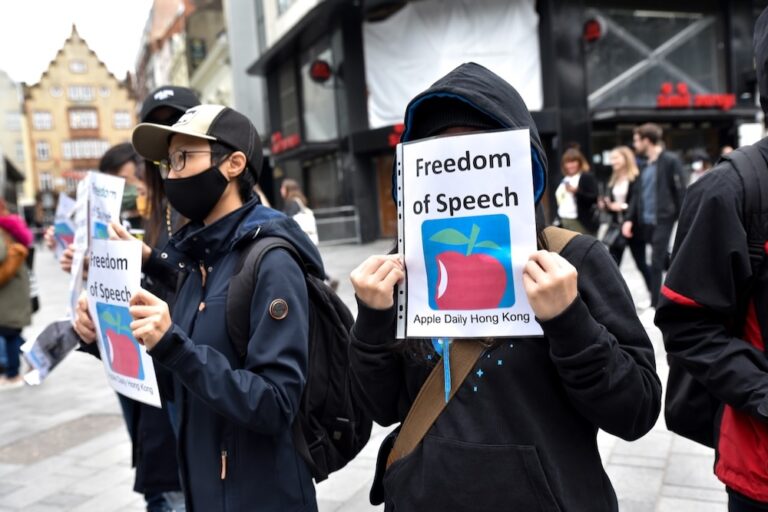Some groups are finding ways to counter hateful language by challenging it, instead of calling for censorship.
To venture online and outside of your carefully tailored network of like-minded people can be to expose yourself to what seems like an ever-rising tide of hateful language.
For social media users living in or simply interested in the Middle East, as battles viciously rage on in Syria, Iraq, and Yemen, happening upon hostile sectarian discourse online has become virtually unavoidable.
For women, Twitter has proven to be an especially unforgiving platform, with reports of high-profile women quitting the platform in the face of vitriolic tweets. Of course, the abuse is not just limited to Twitter, and prominent figures aren’t alone in the face of it.
Homophobic, Islamophobic, anti-Semitic, and other forms of discriminatory speech are also prevalent online, leading many to view the Internet as a petri-dish designed to nurture hatred, one that must be monitored and controlled.
But determining what speech should not be protected by the right to freedom of expression – what some refer to as ‘hate speech’ – is not an easy task. There is no universally accepted definition of it in international human rights law. States vary in defining and responding to it; often exploitatively and with disastrous results. Internet intermediaries, such as Facebook, Google, and Twitter, take it upon themselves to police it according to their own judgment. The free expression community constantly debates its parameters. In spite of the common refrain that we must fight speech with more speech, there is an over-reliance on censoring it. And often, it is dealt with in isolation, without looking at the deeper issues behind it.
While social media can amplify the most polarizing voices, it also offers opportunities to tackle discriminatory and dangerous speech in a manner that encourages debate and protects free speech. After all, if left unchallenged or forced underground, hatred festers, endures and grows.
Below are several examples of truly innovative civil society initiatives designed and implemented by individuals and communities most affected by discrimination and violence. In rejecting censorship as a truly effective means of tackling hateful language, these initiatives present a strong case for counterspeech; a concept strongly advocated for by many of the leading thinkers on the issue.
Nipe Ukweli – Kenya
DISPELLING RUMOURS/EDUCATING THE PUBLIC
Nine years have passed since post-election violence in Kenya almost drove the ethnically diverse country to the brink of civil war in 2007. According to a recent report by Human Rights Watch, hundreds of survivors are still suffering from the devastating physical and psychological repercussions of that period, which resulted in the deaths of 1300 Kenyans and the displacement of more than half a million.
When, in the winter of 2013, Kenya was preparing for its next round of national elections, Kenyans, determined not to let history repeat itself, went to great measures to forestall post-electoral violence. One such measure was Nipe Ukweli – Kiswahili for “give me truth” – one of several campaigns that sought to strike at the catalyst of the violence. For many Kenyans and observers of the 2007-2008 elections, that catalyst was dangerous, incendiary, and pervasive speech. Hateful statements, rumours, and even inflammatory songs were broadcast on radio stations, at political rallies and distributed in emails, leaflets, and text messages.
The idea for the campaign came in August 2012, when a rumour spread that some Kenyans were burning churches en masse. In response, a young Kenyan Twitter user posted a photo of one of the unharmed churches with the words “stop the lying”. In the lead up to the March 2013 elections, organizers behind the Nipe Ukweli campaign worked to educate Kenyans on the impact of hateful speech on societies, and to encourage them to resist and refute false and damaging rumours by employing the same channels of communications that up until that point were mostly used to spread hate and sow distrust between Kenya’s many ethnic groups.
HeartMob – U.S./International
MOBILIZING THE BYSTANDER
Most women have at one point or another deemed it too unsafe to walk the streets of their cities alone. Sexual harassment towards women is a widespread and global problem and it has spilled over into the online sphere, leaving virtually no safe space for women to express themselves freely and without fear.
There is no single way to effectively eliminate harassment. It requires individual, community, and institutional responses. But according to Hollaback!, a decade-old international movement to combat harassment in public spaces, there is one individual who has the power to make a positive and tangible difference every time an incident occurs: the bystander.
Research conducted by Hollaback! in partnership with Cornell University has shown that in cases where a bystander took action by confronting the harasser, the harassment was more likely to cease. With that fact in mind, they launched a campaign called “I’ve Got Your Back”, which encourages bystanders to share their stories of effectively intervening in situations of street harassment on the Hollaback! website. They also created infographics offering examples of what street and online harassment might look like and what you can do when it happens around you. Most recently, they launched a new website, HeartMob, to tackle digital harassment. HeartMob is a private platform that allows victims to report the abuse and request help and support from others in whatever way the deem best. The website allows its community of online bystanders to document harassment with screen grabs, report abuses on behalf of victims to the social networks involved, and engage those harassed with kind words and support. The aim is an ambitious one: to mobilize the silent majority and prove there are more people out there against harassment than there are ones who perpetuate it.
Peace Provocateurs – Ambon, Indonesia
DISPELLING RUMOURS/ BREAKING DOWN STIGMAS
In 1999-2000, Ambon, an island city inhabited mostly by Christians and Muslims, was at the center of sectarian violence that left thousands dead. An uneasy peace settled upon the now-segregated city ever since and flare-ups, while small in scale, occur often enough to keep the communities distrustful of each other. One such flare-up occurred in September 2011, when a Muslim motorcycle rider died in a traffic accident in a Christian neighbourhood. Rumours that Christians had killed him swarmed the city at a rate only achievable through text messages and online. Soon after, two Muslim attacks on Christian areas and a retaliatory attack on a Muslim neighbourhood left 750 homes destroyed and more than 3000 people temporarily displaced.
While many residents let hatred and distrust grip their city once more, an interfaith network of religious leaders, students, activists, teachers, and journalists decided to take matters into their own hands to prevent an outbreak of violence. When disturbing claims spread through the city, they dispatched volunteers within minutes to verify their credibility. The details of a particular incident were then sent to a leadership that, in turn, double-checked the facts and sent out text messages setting the record straight. They called themselves The Peace Provocateurs, and signed all their communications as such.
“If provocateurs could use the new technology to incite violence, we could use it to undermine their incitement,” Jacky Manuputty, a Protestant minister and one of the leaders of the group, told The Independent in 2012. The Peace Provocateurs are still active, and when there are no rumours to dispel, they work to diffuse religious tensions by texting and tweeting examples of the two communities working and living together peacefully.
Il Razzismo è una brutta storia – Italy
UTILIZING HUMOUR
In 2015 alone, more than a million refugees and migrants crossed into Europe, prompting a disturbing rise in xenophobic and racist sentiment across the continent. Incendiary speech on social media sites became so prevalent that it led German politicians to raise concerns about the safety of asylum-seekers in the country and across the continent. Chancellor Angela Merkel urged Facebook to do more to curb hatred on its platform, and the social media giant acquiesced. Its promise to police the site more aggressively, however, was found worrisome by free expression advocates who fear Facebook’s growing role in determining what we’re allowed to say and to whom.
While right-wing, anti-immigrant propaganda has been gaining more traction across Europe in 2015, its influence has always been of concern for Europeans. In the run-up to parliamentary elections in Italy in May 2014, one social theatre group, armed with the force of humour, sought to find alternate ways to counter it. A group of young volunteers led by puppeteer Damiano Giambelli and under the guidance of the Il Razzismo è una brutta storia group took to the streets of Milan in a bid to win over the youth of Italy. They noisily performed a satirical tale of racism against foreigners in six different public locations, each time inviting passersby and onlookers to join them in openly mocking the populist and racist discourse used by candidates in the local and European elections.
American Muslim author vs. Anti-Islam bigot
DIRECT CONFRONTATION
In the United States over the past couple of years, opportunistic politicians like Donald Trump have emboldened those hostile towards minorities; with the American Muslim community increasingly finding itself on the receiving end of such hostility.
“All muslims will be removed from america and europe. and you will all ultimately burn in hell for worshipping a demon god. i bet u r a pedophile [sic].”
When Qasim Rashid, an author, lawyer and Islamic Studies fellow at Harvard, received the above message in an unsolicited email one day in early February, he chose to respond. A fascinating back-and-forth ensued between him and the self-proclaimed Donald Trump supporter, with Rashid patiently challenging every accusation against Islam, Muslims and the Prophet thrown his way.
At one point during the exchange the man admitted that, yes, there were “good and bad people in any demographic”, and it seemed that Rashid was on the brink of a breakthrough. Perhaps he was, but after responding with renewed enthusiasm, he found that he had been blocked.
While Rashid’s measured and thoughtful response might not have had the intended result on this one individual, sharing the exchange on Facebook and Twitter, where he has a sizeable and active following, has resulted in a lot of positive attention and stands as testament to the potential of direct confrontation.
If left unchallenged or forced underground, hatred festers, endures and grows.
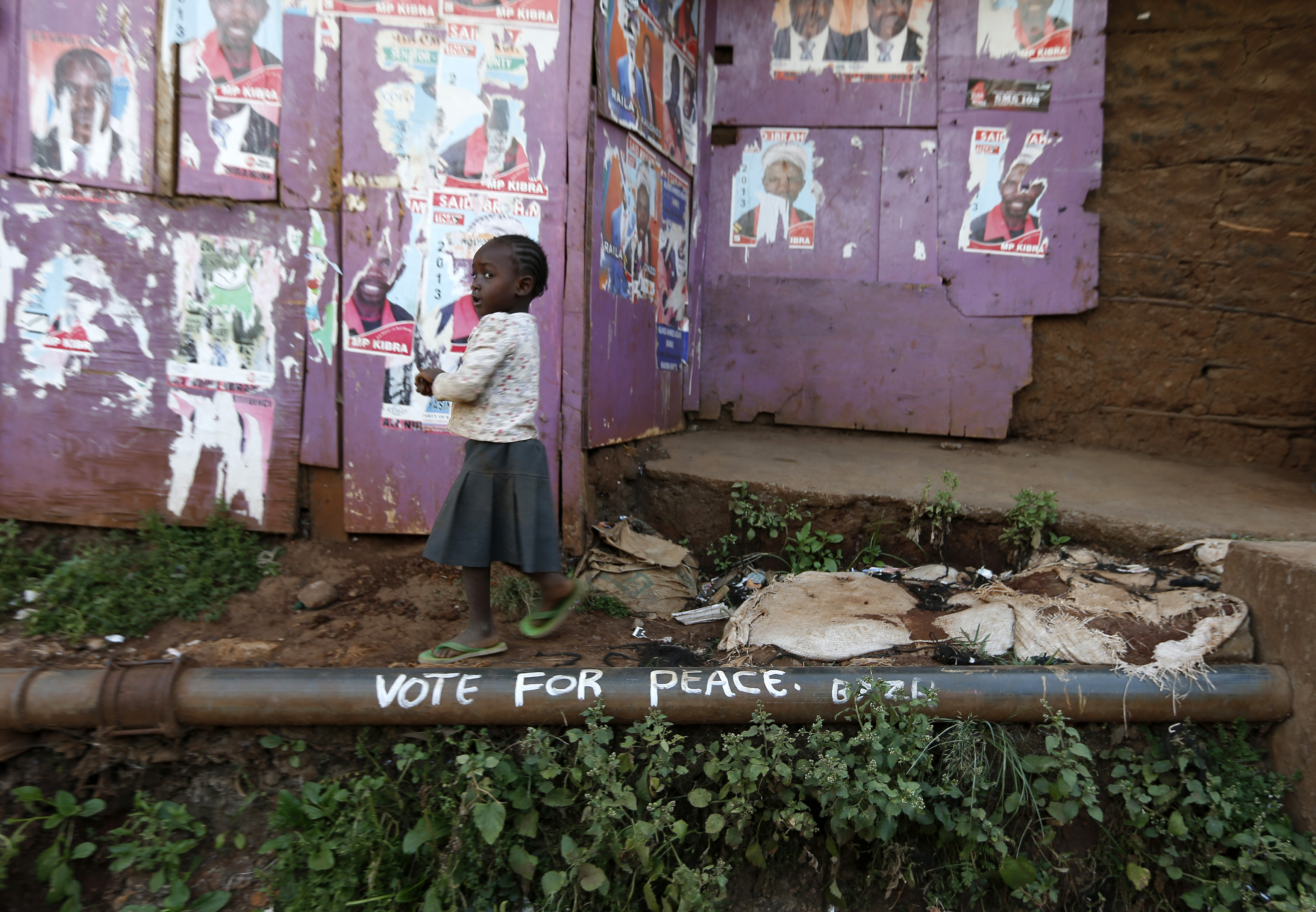
A young girl walks past election posters and a slogan calling for peace in the Kibera slum in Nairobi March 7, 2013REUTERS/Steve Crisp
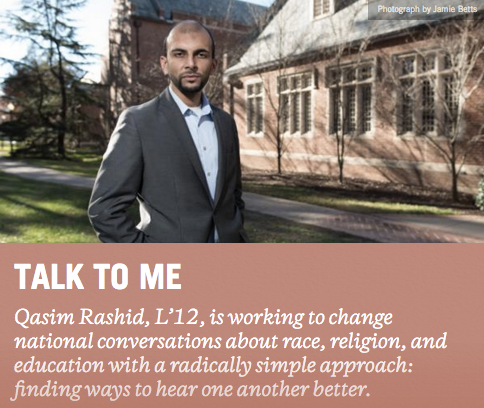
Facebook/Qasim Rashid
